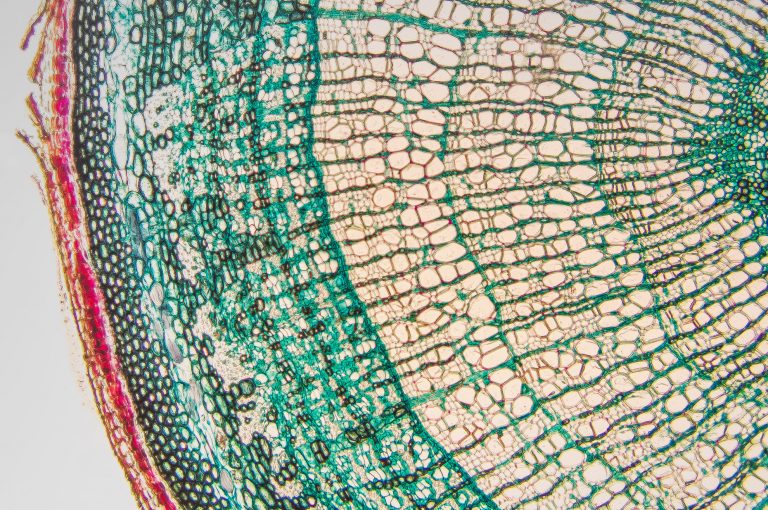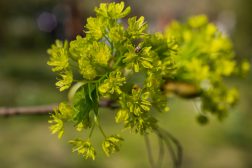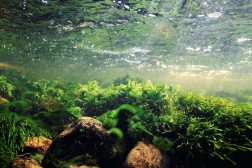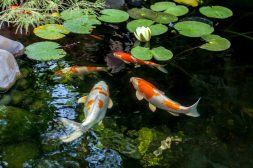Plant Tissues

Cambial cells of a plant tissue
Table of Contents
Plants are composed of three major organ groups: roots, stems, and leaves. As we know from other areas of biology, these organs are comprised of tissues working together for a common goal (function). In turn, tissues are made of a number of cells which are made of elements and atoms on the most fundamental level. In this section, we will look at the various types of plant tissue and their place and purpose within a plant. It is important to realize that there may be slight variations and modifications to the basic tissue types in special plants.
Plant tissues are characterized and classified according to their structure and function. The organs that they form will be organized into patterns within a plant which will aid in further classifying the plant. A good example of this is the three basic tissue patterns found in roots and stems which serve to delineate between woody dicot, herbaceous dicot and monocot plants. We will look at these classifications later on in the Fruits Flowers and Seeds tutorial.

Meristematic Tissues
Tissues where cells are constantly dividing are called meristems or meristematic tissues. These regions produce new cells. These new cells are generally small, six-sided boxlike structures with a number of tiny vacuoles and a large nucleus, by comparison. Sometimes there are no vacuoles at all. As the cells mature the vacuoles will grow to many different shapes and sizes, depending on the needs of the cell. It is possible that the vacuole may fill 95% or more of the cell’s total volume. There are three types of meristems: (1) apical meristems, (2) lateral meristems, and (3) intercalary meristems.
Apical meristems
Apical meristems are located at or near the tips of roots and shoots. As new cells form in the meristems, the roots and shoots will increase in length. This vertical growth is also known as primary growth. A good example would be the growth of a tree in height. Each apical meristem will produce embryo leaves and buds as well as three types of primary meristems: protoderm, ground meristems, and procambium. These primary meristems will produce the cells that will form the primary tissues.
Lateral meristems
Lateral meristems account for secondary growth in plants. Secondary growth is generally horizontal growth. A good example would be the growth of a tree trunk in girth. There are two types of lateral meristems to be aware of in the study of plants.
The vascular cambium, the first type of lateral meristem, is sometimes just called the cambium. The cambium is a thin, branching cylinder that, except for the tips where the apical meristems are located, runs the length of the roots and stems of most perennial plants and many herbaceous annuals. The cambium is responsible for the production of cells and tissues that increase the thickness, or girth, of the plant.
The cork cambium, the second type of lateral meristem, is much like the vascular cambium in that it is also a thin cylinder that runs the length of roots and stems. The difference is that it is only found in woody plants, as it will produce the outer bark.
Both the vascular cambium and the cork cambium, if present, will begin to produce cells and tissues only after the primary tissues produced by the apical meristems have begun to mature.
Intercalary meristems
Intercalary meristems are found in grasses and related plants that do not have a vascular cambium or a cork cambium, as they do not increase in girth. These plants do have apical meristems and in areas of leaf attachment, called nodes, they have the third type of meristematic tissue. This meristem will also actively produce new cells and is responsible for increases in length. The intercalary meristem is responsible for the regrowth of cut grass.
There are other tissues in plants that do not actively produce new cells. These tissues are called nonmeristematic tissues. Nonmeristematic tissues are made of cells that are produced by the meristems and are formed to various shapes and sizes depending on their intended function in the plant. Sometimes the tissues are composed of the same type of cells throughout, or sometimes they are mixed. There are simple tissues and complex tissues to consider but we will start with the simple tissues for the sake of discussion.
Simple Tissues
There are three basic types named for the type of cell that makes up their composition: (1) parenchyma tissue, (2) collenchyma tissue, and (3) sclerenchyma tissue.
Parenchyma tissue
Parenchyma cells form parenchyma tissue. Parenchyma cells are the most abundant of cell types and are found in almost all major parts of higher plants. These cells are basically sphere-shaped when they are first made. However, these cells have thin walls, which flatten at the points of contact when many cells are packed together. Generally, they have many sides with the majority having 14 sides. These cells have large vacuoles and may contain various secretions including starch, oils, tannins, and crystals. Some parenchyma cells have many chloroplasts and form the tissues found in leaves. This type of tissue is called chlorenchyma. The chief function of this type of tissue is photosynthesis, while parenchyma tissues without chloroplasts are generally used for food or water storage. Additionally, some groups of cells are loosely packed together with connected air spaces, such as in water lilies, this tissue is called aerenchyma tissue. These types of cells can also develop irregular extensions of the inner wall which increases the overall surface area of the plasma membrane and facilitates transferring of dissolved substances between adjacent cells. Parenchyma cells can divide if they are mature, and this is vital in repairing damage to plant tissues. Parenchyma cells and tissues comprise most of the edible portions of fruit.
Collenchyma tissue
Collenchyma cells form collenchyma tissue. These cells have a living protoplasm, like parenchyma cells, and may also stay alive for a long period of time. Their main distinguishing difference from parenchyma cells is the increased thickness of their walls. In cross-section, the walls look uneven. Collenchyma cells are found just beneath the epidermis and generally, they are elongated and their walls are pliable in addition to being strong. As a plant grows these cells and the tissues they form, provide flexible support for organs such as leaves and flower parts. Good examples of collenchyma plant cells are the ‘strings’ from celery that get stuck in our teeth.
Sclerenchyma tissue
Sclerenchyma cells form sclerenchyma tissue. These cells have thick, tough secondary walls that are embedded with lignin. At maturity, most sclerenchyma cells are dead and function in structure and support. Sclerenchyma cells can occur in two forms:
- Sclereids are sclerenchyma cells that are randomly distributed throughout other tissues. Sometimes they are grouped within other tissues in specific zones or regions. They are generally as long as they are wide. An example would be the gritty texture in some types of pears. The grittiness is due to groups of sclereid cells. Sclereids are sometimes called stone cells.
- Fibers are sometimes found in association with a wide variety of tissues in roots, stems, leaves, and fruits. Usually, fiber cells are much longer than they are wide and have a very tiny cavity in the center of the cell. Currently, fibers from over 40 different plant families are used in the manufacture of textiles, ropes, string and canvas goods to name a few.
Secretory Cells and Tissues
As a result of cellular processes, substances that are left to accumulate within the cell can sometimes damage the protoplasm. Thus it is essential that these materials are either isolated from the protoplasm in which they originate, or be moved outside the plant body. Although most of these substances are waste products, some substances are vital to normal plant functions. Examples: oils in citrus, pine resin, latex, opium, nectar, perfumes, and plant hormones. Generally, secretory cells are derived from parenchyma cells and may function on their own or as a tissue. They sometimes have great commercial value.
Complex Tissues
Tissues composed of more than one cell type are generically referred to as complex tissues. Xylem and phloem are the two most important complex tissues in a plant, as their primary functions include the transport of water, ions, and soluble food substances throughout the plant. While some complex tissues are produced by apical meristems, most in woody plants are produced by the vascular cambium and is often referenced as vascular tissue. Other complex tissues include the epidermis and the periderm. The epidermis consists primarily of parenchyma-like cells and forms a protective covering for all plant organs. The epidermis includes specialized cells that allow for the movement of water and gases in and out of the plant, secretory glands, various hairs, cells in which crystals are accumulated and isolated, and other cells that increase absorption in the roots. The periderm is mostly cork cells and therefore forms the outer bark of woody plants. It is considered to be a complex tissue because of the pockets of parenchyma cells scattered throughout.
Xylem
Xylem is an important plant tissue as it is part of the ‘plumbing’ of a plant. Think of bundles of pipes running along the main axis of stems and roots. It carries water and dissolved substances throughout and consists of a combination of parenchyma cells, fibers, vessels, tracheids, and ray cells. Long tubes made up of individual cells are the vessels, while vessel members are open at each end. Internally, there may be bars of wall material extending across the open space. These cells are joined end to end to form long tubes. Vessel members and tracheids are dead at maturity. Tracheids have thick secondary cell walls and are tapered at the ends. They do not have end openings such as the vessels. The tracheids ends overlap with each other, with pairs of pits present. The pit pairs allow water to pass from cell to cell. While most conduction in the xylem is up and down, there is some side-to-side or lateral conduction via rays. Rays are horizontal rows of long-living parenchyma cells that arise out of the vascular cambium. In trees, and other woody plants, ray will radiate out from the center of stems and roots and in cross-section will look like the spokes of a wheel.
Phloem
Phloem is an equally important plant tissue as it also is part of the ‘plumbing’ of a plant. Primarily, phloem carries dissolved food substances throughout the plant. This conduction system is composed of sieve-tube member and companion cells, that are without secondary walls. The parent cells of the vascular cambium produce both xylem and phloem. This usually also includes fibers, parenchyma, and ray cells. Sieve tubes are formed from sieve-tube members laid end to end. The end walls, unlike vessel members in xylem, do not have openings. The end walls, however, are full of small pores where cytoplasm extends from cell to cell. These porous connections are called sieve plates. In spite of the fact that their cytoplasm is actively involved in the conduction of food materials, sieve-tube members do not have nuclei at maturity. It is the companion cells that are nestled between sieve-tube members that function in some manner bringing about the conduction of food. Sieve-tube members that are alive contain a polymer called callose. Callose stays in solution as long as the cell contents are under pressure. As a repair mechanism, if an insect injures a cell and the pressure drops, the callose will precipitate. However, the callose and a phloem protein will be moved through the nearest sieve plate where they will for a plug. This prevents further leakage of sieve tube contents and the injury is not necessarily fatal to overall plant turgor pressure.
Epidermis
The epidermis is also a complex plant tissue, and an interesting one at that. Officially, the epidermis is the outermost layer of cells on all plant organs (roots, stems, leaves). The epidermis is in direct contact with the environment and therefore is subject to environmental conditions and constraints. Generally, the epidermis is one cell layer thick, however there are exceptions such as tropical plants where the layer may be several cells thick and thus acts as a sponge. Cutin, a fatty substance secreted by most epidermal cells, forms a waxy protective layer called the cuticle. The thickness of the cuticle is one of the main determiners of how much water is lost by evaporation. Additionally, at no extra charge, the cuticle provides some resistance to bacteria and other disease organisms. Some plants, such as the wax palm, produce enough cuticle to have commercial value: carnauba wax. Other wax products are used as polishes, candles, and even phonographic records. Epidermal cells are important for increasing the absorptive surface area in root hairs. Root hairs are essentially tubular extensions of the main root body composed entirely of epidermal cells. Leaves are not left out. They have many small pores called stomata that are surrounded by pairs of specialized epidermal cells called guard cells. Guard cells are unique epidermal cells because they are of a different shape and contain chloroplasts. (Guard cells – discussed in greater detail in the Leaves tutorial). There are other modified epidermal cells that may be glands or hairs that repel insects or reduce water loss.
Periderm
In woody plants, when the cork cambium begins to produce new tissues to increase the girth of the stem or root the epidermis is sloughed off and replaced by a periderm. The periderm is made of semi-rectangular and boxlike cork cells. This will be the outermost layer of bark. These cells are dead at maturity. However, before the cells die, the protoplasm secretes a fatty substance called suberin into the cell walls. Suberin makes the cork cells waterproof and aids in protecting tissues beneath the bark. There are parts of the cork cambium that produce pockets of loosely packed cork cells. These cork cells do not have suberin embedded in their cell walls. These loose areas are extended through the surface of the periderm and are called lenticels. Lenticels function in gas exchange between the air and the stem interior. At the bottom of the deep fissures in tree bark are the lenticels.
You will also like...

Biological Viruses
Viruses possess both living and non-living characteristics. This unique feature distinguishes them from other organisms...

Gibberellins and Gibberellic Acid
This tutorial describes the role of gibberellin family in plants. Find out the effects of gibberellin on plant growth an..

Principles of Hormonal Control Systems
Hormones are essential in the regulation of the activity of the various biological systems of the human body. The ineffi..

Animal Water Regulation
Animals adapt to their environment in aspects of anatomy, physiology, and behavior. This tutorial will help you understa..

Lotic Communities & Algae
Lotic communities have conditions that are rather harsh for typical plants. Thus, the diversity of plant species in loti..

Freshwater Communities & Lentic Waters
Lentic or still water communities can vary greatly in appearance -- from a small temporary puddle to a large lake. The s..
